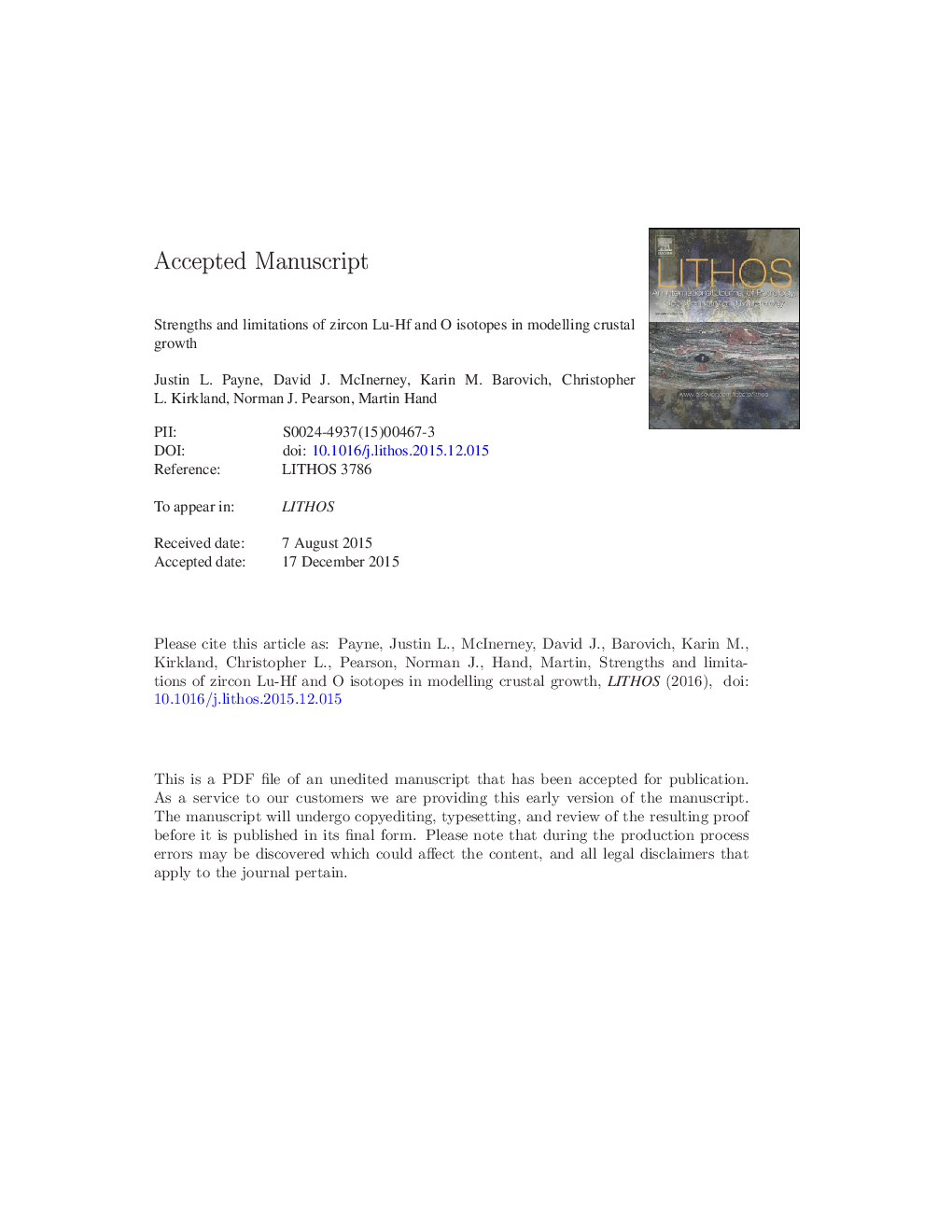| Article ID | Journal | Published Year | Pages | File Type |
|---|---|---|---|---|
| 6440376 | Lithos | 2016 | 69 Pages |
Abstract
The robust nature of the mineral zircon, combined with our analytical ability to readily acquire in-situ uranium-lead (U-Pb), lutetium-hafnium (Lu-Hf) and oxygen (O) isotopic data, has resulted in a rapid rise in the use of zircon isotopic datasets for studying both the generation of continental crust and its growth through Earth history. In such studies there has been a strong focus on developing methods to determine the timing and/or proportion of juvenile magmatic addition to the continental crust. One widespread approach to determine the timing of crustal growth has been the construction or fitting of 'reworking arrays' to regional Hf isotopic datasets. Simple stochastic models are presented which highlight that in many cases apparent reworking arrays are much more likely to represent a process of on-going dilution and refertilisation of ancient crust, consistent with “Hot Zone” models of granitoid generation and the need to refertilise lower crustal reservoirs to maintain magmatism. A new compilation of magmatic rock zircon Lu-Hf and O isotope data is used to demonstrate that the use of mantle-like O isotope data as a screening tool for “meaningful” Hf model ages is also unlikely to be reliable, with independently constrained data indicating that as few as 14% of Hf model ages provide a meaningful indicator of the timing of crustal growth. The limitations of Hf model ages are discussed with regard to existing approaches for continental growth and we demonstrate that popular inverse modelling approaches suffer from a bias created by both the use of model ages and numerical artefacts. In an effort to address some of the limitations within existing models, we develop stochastic models based on joint calibration of multiple datasets which allow for more unique solutions.
Related Topics
Physical Sciences and Engineering
Earth and Planetary Sciences
Geochemistry and Petrology
Authors
Justin L. Payne, David J. McInerney, Karin M. Barovich, Christopher L. Kirkland, Norman J. Pearson, Martin Hand,
